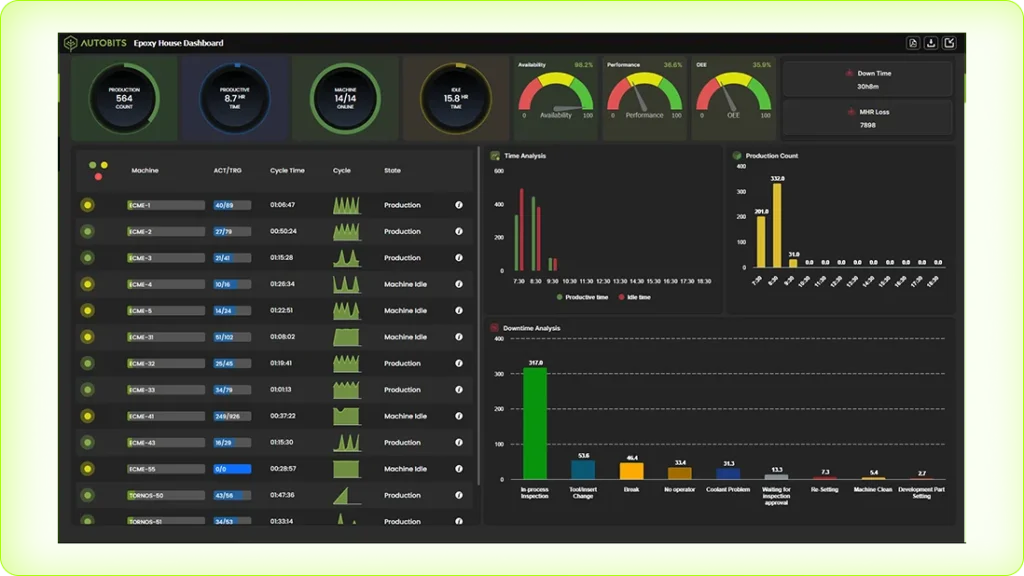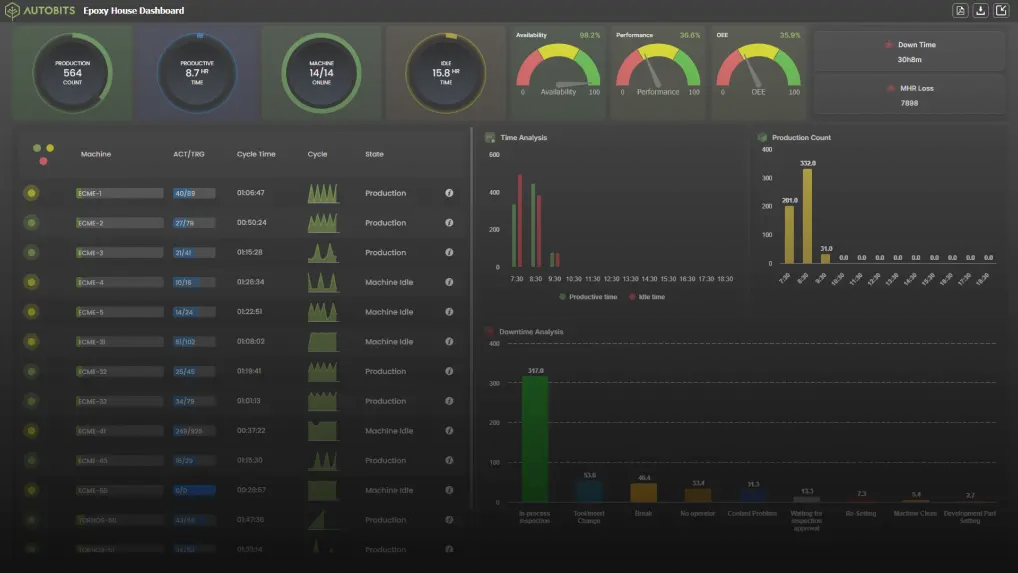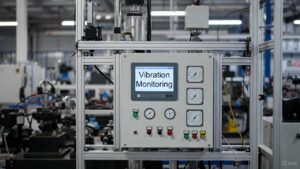Today’s industrial world is increasingly driven by data. The push for organizations to minimize equipment downtime and maximize asset performance are more important than ever. One key step to achieving this is through predictive maintenance by utilizing a proactive maintenance strategy that uses real-time, condition-based data to proactively predict equipment failure, helping organizations avert future issues before they occur. One of the key enablers of predictive maintenance is Asset Performance Management (APM) Software.
Asset Performance Management (APM) software takes raw operational data and turns it into actionable information so maintenance teams can predict, plan and, ultimately, avoid equipment failure. In this blog, we will describe how APM software can help organizations establish and implement an effective predictive maintenance strategy, resulting in less operational risk and improved asset reliability.

What is Predictive Maintenance?
Predictive Maintenance (PdM) is a type of maintenance strategy that provides capabilities using data analytics, machine learning and/or condition-monitoring tools to identify signs of failure. This differs from reactive maintenance (fix something when it breaks) or preventative maintenance (service after a certain period of time), predictive maintenance relies on real-time insights and services assets when necessary.
The benefits of predictive maintenance can include:
- Fewer unplanned downtimes
- Lower maintenance costs
- Increased asset longevity
- Better safety and compliance
- Better resource utilization
| Boost Uptime with Autobits Labs’ Predictive Maintenance Software Discover the power of proactive maintenance with Autobits Labs. Our Predictive Maintenance Solution leverages advanced data analytics and real-time data to identify issues before they become a costly problem. From improving asset reliability, to scheduling maintenance efficiently and extending asset life, we provide everything you need in one platform. Key Benefits: 1. Real-time equipment monitoring 2. AI-driven failure predictions 3. Reduced unplanned downtime 4. Lower maintenance costs 5. Easy integration with existing systems Ready to transform your maintenance strategy? Get a Free Demo Today |
What is Asset Performance Management (APM) Software?
Asset Performance Management (APM) software is a collection of tools that help users track, assess and enhance the performance functions and condition of physical assets. It aggregates assets’ data, like data from sensors, management systems, and historical data, and utilizes data analytics to detect probabilities of potential failures, among other data concerning performance metrics.
Asset Performance Management (APM) software incorporates technologies, like:
- IoT (Internet of Things)
- Artificial Intelligence (AI)
- Machine Learning (ML)
- Digital twins
- Risk-based inspection models
By combining these technologies, APM software enables a shift from time-based maintenance to condition-based and predictive strategies.
How APM Software Enables Predictive Maintenance
Let’s break down how APM software plays a pivotal role in enabling and enhancing predictive maintenance:
Real-Time Data Collection and Monitoring
Asset Performance Management (APM) software continuously captures data from IoT-enabled sensors designed into machinery. These sensors monitor key condition metrics, including:
- Vibration
- Temperature
- Pressure
- Oil quality
- Acoustic signal
This data is routinely provided to the APM platform and represents a live view of the asset health.
Advanced Analytics and Machine Learning
The most valuable aspect of the APM software is that it can use advanced analytics and machine learning to recognize patterns of behavior in equipment. These predictive algorithms identify anomalies that indicate impending failures before they occur.
For example, a gradual increase in motor vibration could predict failure in bearings. APM systems provide an early warning to the maintenance team to allow sufficient time for intervention when the alarm seems low-level.
Automated Alerts and Recommendations
When the system discovers anomalies or breaches against thresholds, it automatically sends alerts and diagnostic recommendations to reduce the time it takes for technicians to:
- Understand the problem
- Assess its importance
- Plan time to go resolve it
- Proactively order parts for replacement
Shifting from fire-fighting to reassuring planned interventions can lt save time and effort in the long run.
Asset Health Index and Risk Assessment
APM platforms provide tools to calculate an Asset Health Index (AHI)—a score that indicates the condition and risk of an asset. The AHI, combined with criticality analysis, helps make maintenance an easy prioritization decision for high-risk or high-value equipment.
Utilizing AHI will allow us to put resources in the areas that need it most, thus enhancing overall effectiveness and safety.
Integration with Maintenance and ERP Systems
With an increasing number of APM solutions fully integrated with EAM, CMMS, and ERP platforms, the aim is to:
- Automatically generate work with work orders
- Achieve optimal scheduling of maintenance tasks
- Work smarter with inventory (you won’t lose spare parts when you need them)
- Gain visibility across the organization so nothing falls through the cracks
This connected world of enterprise asset management drives predictive maintenance through a full view of the asset and its lifecycle.
Reduction in Unplanned Downtime
APM software minimizes unplanned downtime by predicting failures and taking actions to prevent them. As a outcome, businesses enjoy:
- Increased operational efficiency
- Improved customer satisfaction
- Reduced costs of emergency repairs
- More equipment is operating and available to the business
For businesses in industries like oil & gas, manufacturing, and utilities, avoiding unexpected outages can save millions per year.
Data-Driven Decision-Making
APM will also provide decision-makers with a treasure trove of actionable insights through predictive maintenance. Maintenance and reliability leaders can:
- Monitoring performance trends
- Assess maintenance ROI
- Defend CAPEX decisions
- Create longer-term maintenance plans
In short, APM software creates strategic value from data.
Industries That Benefit from Asset Performance Management Software and Predictive Maintenance
Predictive maintenance can apply to lots of fields, but it is particularly helpful for asset-heavy industries like:
- Oil & Gas
- Power Generation
- Manufacturing
- Transportation & Logistics
- Mining
- Water & Wastewater Utilities
These industries depend on equipment uptime and regulatory compliance, making APM solutions with predictive maintenance a fundamental part of operations.
Challenges in Implementing APM Software for Predictive Maintenance
There are some drawbacks that organizations will encounter when adopting APM software with predictive maintenance functionality, such as:
- High initial set-up costs
- Availability of knowledgeable data analysts or data scientists
- Integration with legacy systems
- Change management and workforce training
There are often better long-term ROI available that offsets these shortcomings, especially, if solutions are implemented in phases.
The Future of Predictive Maintenance with APM Software
As APM technology continues to develop, predictive maintenance will become smarter and more automated. Here’s what we can expect:
- Greater uptake of digital twins
- AI-driven maintenance scheduling
- Edge computing for data faster processing
- Prescriptive maintenance capabilities
These enabling technologies will exacerbate efficiency and minimize risk in all sectors.
Conclusion
APM software is revolutionizing the practice of predictive maintenance. It allows organizations to transition from reactive repairs to more proactive solutions – saving time, money and resources. Utilizing real-time information, machine learning, and smart analytics APM allows for smarter, safer, and more efficient asset management.
Any organization committed to maximizing asset value while lowering maintenance costs, and developing true operational excellence should see Asset Performance Management software as their next major advancement.
FAQs
What is the difference between preventive and predictive maintenance?
Preventive maintenance is performed on a timelines-built schedule, while predictive maintenance leverages data and analytics that stem from the IoT to determine when maintenance is actually prescriptive.
Is Asset Performance Management software just for larger enterprises?
No, in reality, while larger organizations will see the most benefit, there are a lot of scalable APM solutions available to small and medium businesses as well.
How does APM software collect data?
It collects data through IoT sensors, SCADA systems, and integrated operational software platforms.
Can predictive maintenance prevent all equipment failures?
No, it will not prevent all equipment failures, but it does dramatically reduce the likelihood of unplanned failures by allowing companies to identify problems earlier.
When can we expect to see ROI with Asset Performance Management (APM) software?
Most organizations see measurable ROI in the range of 6-12 months, depending on the asset types and level of commitment.
What is Asset Performance Management?
Asset Performance Management (APM) is a process that leverages data and technology to monitor, maintain, and optimize the success of an asset (the machinery, equipment, and associated infrastructure) throughout its life cycle. The primary objective of asset performance management is to improve efficiency, streamline costs, and decrease risks by identifying and preventing failures in real-time while leveraging monitoring, analytics, and decision-making technologies.
What is Asset Performance Management software?
Asset Performance Management (APM) software is a tool that allows organizations to track, analyze, and manage the performance of their assets. With the aid of data collected from sensors, maintenance records, and analytics to make predictions around failure, improve asset reliability, and lower operational costs, APM software can allow people to make informed decisions about assets. APM software gathers the data and provides useable insights to provide recommendations for both asset maintenance and improvements to asset performance.





